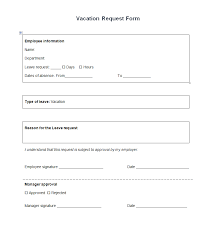Content can be stored in different categories or in different ways on intranets, but the result is often the same : it takes time to find it, it’s not efficient, and the whole experience is a nightmare for both the end-user and the manager of the platform. So, what solutions do we have? In this article, we will see how using metadata to store content can improve the experience.

 Written by Soline De Dorlodot, Change and Intranet Manager at Devoteam G Cloud
Written by Soline De Dorlodot, Change and Intranet Manager at Devoteam G Cloud
A traditional intranet is like a closet : you have to store each type of content in a specific location. In general, whether you are trying to find a jumper in a closet or a procedure on the intranet, you do not remember exactly where it is. Instead, you rely on the storage logic of the dressing room or the intranet.
For example, you may find your jumper quickly, because you know that all the jumpers are on the left-hand shelf. Similarly, you can find FAQs without trouble because you know that they are filed under the “Support” label of the intranet. In both cases, it will not take much effort for the user to find what he/she is looking for.
One file, several locations
Things get tricky when content can be stored in more than one place : is my red jumpsuit with my trousers or with my dresses? Is the procedure for requesting leave under “HR” or under “Procedure”?

Now, let’s assume that the person who manages our intranet/closet is a bit messy (like me). Soon, the contents pile up on top of each other in an inextricable mess. The content our users are looking for becomes very hard to find.
The user of the dressing room might end up wearing another outfit, feeling less comfortable, and not approaching his crush as a result. That’s the potential love of his life gone! As for the intranet user, she may give up requesting leave in a formal way. She’ll go to Barbados with her family and discover on her return that she’s been fired for serious misconduct.
Obviously, both these scenarios are unlikely to happen. What is certain, however, is that our two users would have lost a lot of time.
How to solve this conundrum?
Fed up, the fashion enthusiast decides to digitise the contents of his closet so that it can be managed through an application. He will take photos of his clothes and list them with the help of virtual tags, commonly called metadata. To compose an outfit, he’ll just have to search the characteristics of the clothes he is looking for. What a time saver!

Type: Pants
Colour: Blue
Season: Winter
Size: M
Brand: XYZ
As for the intranet user, she reports her struggles to the manager of the platform. The decision is made to move to another intranet, one that doesn’t work like traditional ones with a content tree. This time, the intranet must organise content using metadata. Their choice leads them to LumApps.
 Type: Procedure
Type: Procedure
Department: HR
Subsidiaries: Antwerp and Ghent
She will also be able to choose who the information is intended for – in this case, all the employees in the company.
The use of metadata will allow the intranet manager to :
- Organise the content by grouping it into intuitive and cross-cutting categories
- Make the content easy to find for the end user
- Make the same content appear in several places on the intranet without having to duplicate it
As a result, the intranet user gains time and efficiency.
We’ve now found a solution for the fashion enthusiast who will finally wear his red jumpsuit, feel great, and ask his crush out! As for the intranet user, she’ll be able to go to Barbados with her mind at peace. These are the happy ends that we all love…
This article has hopefully sparked your interest and made you think about your own intranet structure. At Devoteam G Cloud, we can help you leverage your intranet to keep your employees engaged and informed. Please reach out, our team of experienced intranet experts would gladly help you.
If you need help in transforming your internal communications, our experts would love to hear from you!
Do you want to discuss your own internal communications project with us?
Get in touch with
Inês Valadas
Supporting companies with their employee experience journey ? | engagement & retention strategy ?
